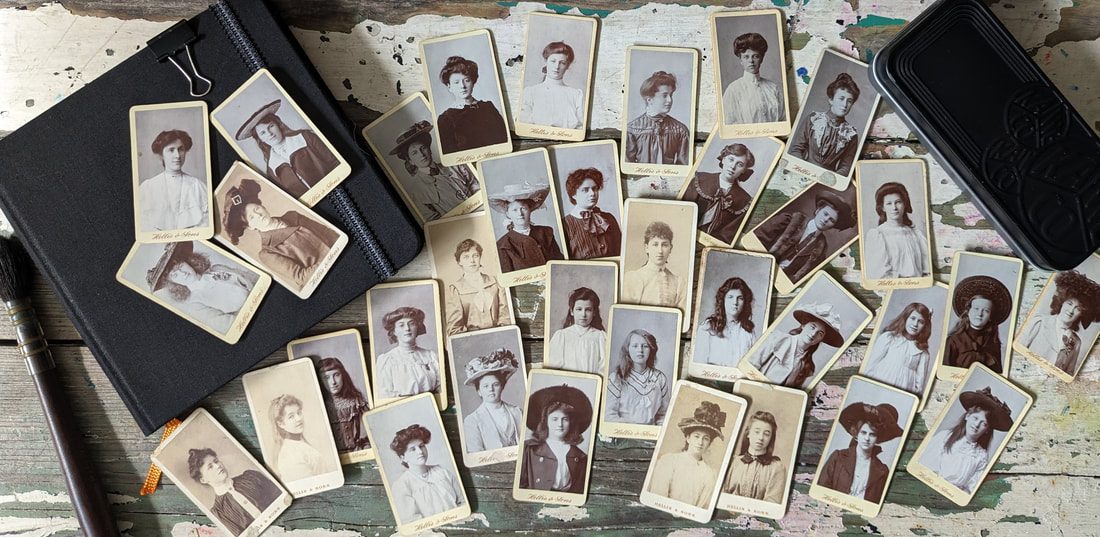"The commercial value of the human face was never tested to such an extent as it is at the present moment in these handy photographs. No man, or woman either, knows but some accident may elevate them to the position of hero of the hour and send up the value their countenances to a degree they never dreamed of." ~ Dr. Andrew Wynter, 1819-1876 A NEW YEAR & A NEW PROJECT! The status of women in the Victorian era was one of striking discrepancy between the United Kingdom's power and wealth and its appalling social conditions. During this era of Queen Victoria, women did not have the right to vote, sue, or if married, own property. Women were expected to live in the domestic sphere, to provide their families with a clean home, good meals, and to raise their children. Victorian women also labored within the paid workforce in increasing numbers following the Industrial Revolution. Their rights were extremely limited, losing ownership of their wages, their physical property, and bodily autonomy once married. Upon divorce, they had no rights to any property accumulated during marriage which left them impoverished. Feminist ideas spread among the educated middle classes, discriminatory laws were repealed, and the women's suffrage movement gained momentum in the last years of the Victorian era. The carte-de-visite, or visiting card, was a small format photograph that was more affordable and, therefore, accessible to both middle and upper classes, In an early form of social media, they were commonly traded among friends and visitors with the popularity and rapid uptake worldwide due to their relative cheapness led to the publication and collection of portraits of prominent persons. Photographers would pay a well-known sitter in return for the right to publish their photograph; “the person photographed was offered a flat fee ranging from 25 to 1000 dollars, depending upon notoriety, or a royalty based upon the number of copies sold.” The faces that attracted sales, or who already had some incidental notoriety, earned further celebrity. England’s copyright laws protected photographers' rights over those of the subject. Americans, as with citizens of other countries, were not only buying photographs of themselves, but also collecting photographs of celebrities. Women in particular found themselves vulnerable to having their pictures purchased by 'cads' who would boast that she had gifted them the image and, given the moral standards of the day, discovered their reputations 'tarnished'. PHOTOGRAPHS (Where on Earth Antiques): Hellis & Sons, a London-based (U.K.) photographic studios founded by Robert Hellis (1835-1895) in 1870; the studio with the most branches in 19th century London; also professor of magic-seances, 1878; partnership between William Henry Hellis, William Edward Morgan & Robert William Hellis dissolved January 1, 1928. (Tintype: Riley JB). MATERIALS GENEROUSLY PROVIDED BY A.GALLO: Comments are closed.
|
|




